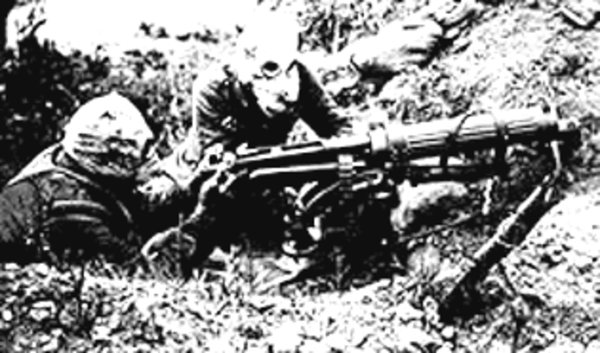The Vickers Machine Gun
The Vickers machine gun was built Vickers Limited based on the successful Maxim gun of the 19th Century. The machine gun was formally adopted by the British Army in 1912 and became the standard issue machine gun. However, there were still large shortages when World War One began so the British Expeditionary Force was only equipped with Lee Enfield rifles or Maxim guns.
Initially, the price for the Vickers gun was high but it was quickly reduced when the company was accused of profiteering. Once the price was down, the number of Vickers machine guns increased and it became the primary machine gun, serving on all fronts.

The Vickers was a water-cooled gun, featuring a one-gallon jacket that would wrap around the main barrel and keep it cool, while a rubber hose provided an outlet for the steam as it travelled to a container for condensing.
The machine gun was conveniently developed to use the same ammunition as the Lee Enfield rifle (0.303 bullets) and had an impressive firing rate of 450 bullets per minute.
As one of the first machine guns to be used during wartime, the Vickers did suffer from high bullet wastage, but it still had a brutal impact on any attacking forces that got in its path.
In total, the Vickers weighed around 20kg and as such required the use of a tripod to keep it upright and steady. This meant it was a relatively difficult weapon to transport around the battlefield and sometimes required up to six men to get it to the ideal location along the Western Front. However, when placed in a static location and used defensively it proved to be deadly.
Eventually the Vickers was phased out and by the end of 1915 it had been replaced by the Lewis gun. However, it was redefined as a heavy machine gun and still used in other campaigns.
In spite of its issues, the Vickers has retained its reputation as being a reliable and destructive weapon that provided a powerful defence for Allied front lines.
MLA Citation/Reference
"The Vickers Machine Gun". HistoryLearning.com. 2026. Web.
